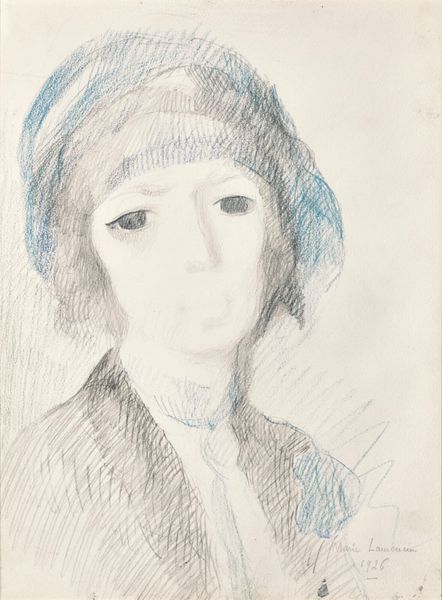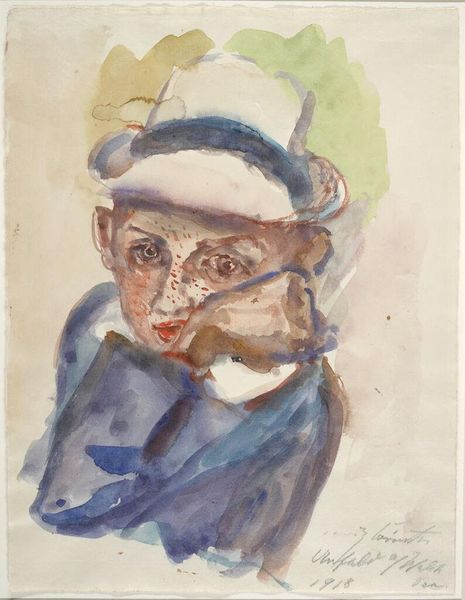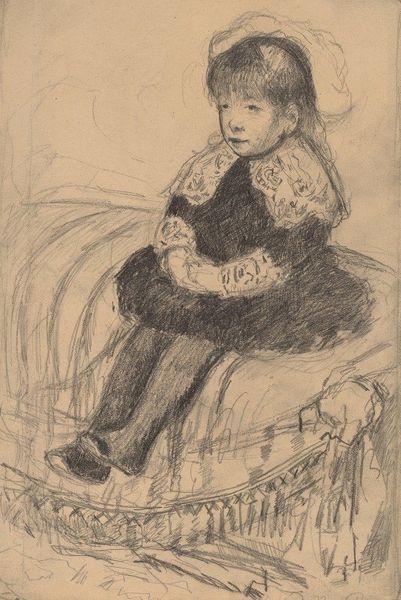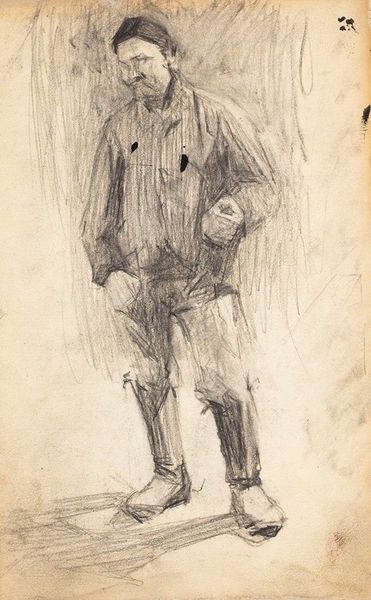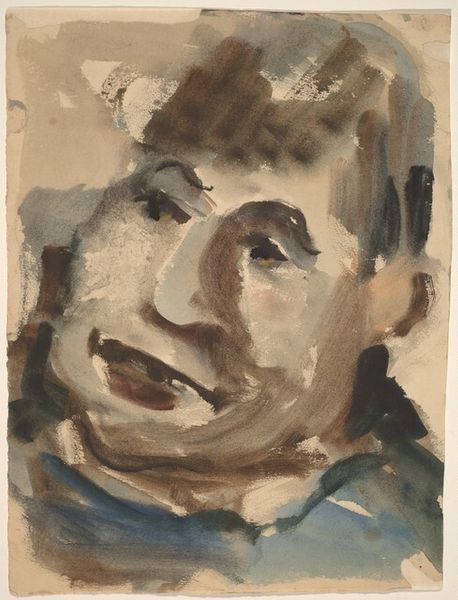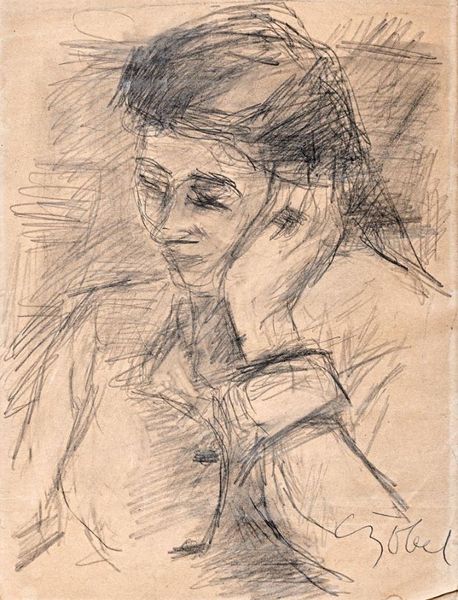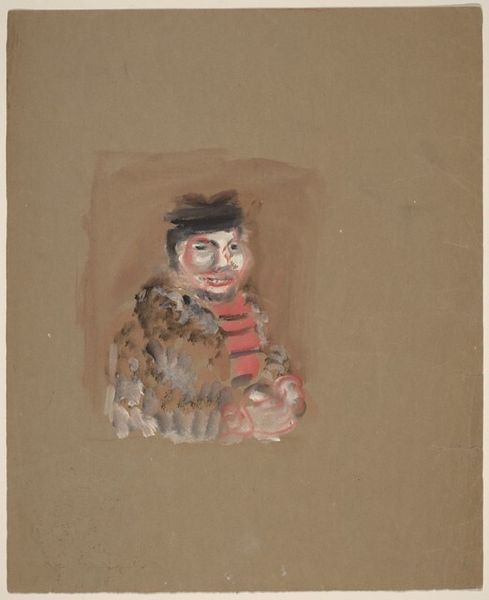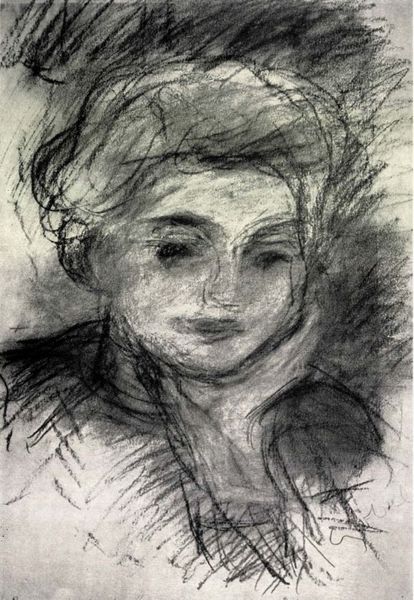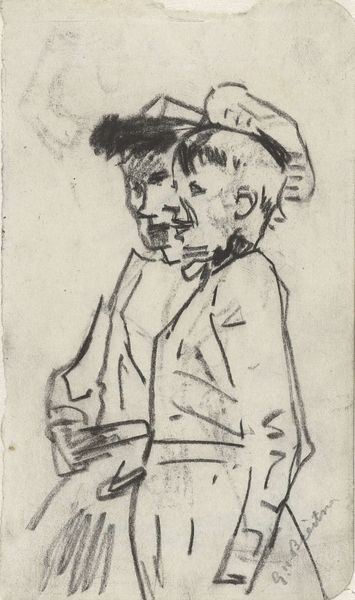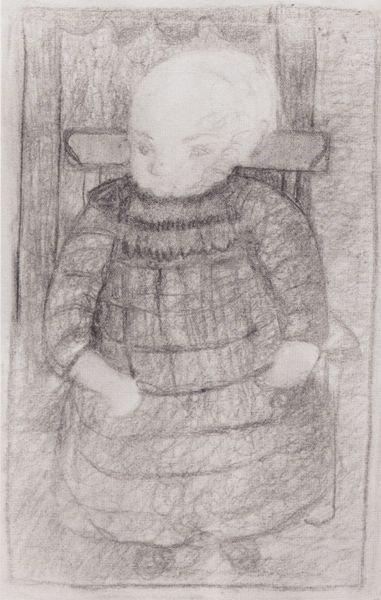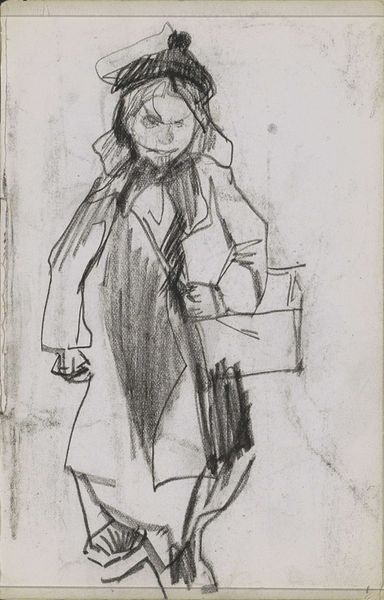
drawing
#
drawing
#
amateur sketch
#
toned paper
#
pencil sketch
#
charcoal drawing
#
possibly oil pastel
#
coloured pencil
#
underpainting
#
watercolour bleed
#
watercolour illustration
#
watercolor
Copyright: Public Domain: Artvee
Curator: Looking at Jean-Louis Forain's "Female Figure," created around 1891, my initial thought is of immediacy. It feels so fleeting, almost like a snatched moment captured on paper. Editor: There's a raw quality to it, definitely. For me, the feathered hat is what first caught my eye. Birds in art often suggest freedom or the soul. I wonder if that motif carried particular weight in late 19th-century Parisian society? Curator: The bird, the quick strokes… It suggests an urban, almost predatory energy, in line with Forain's sharp eye for social dynamics. Charcoal and watercolor can be quite unforgiving if rushed, which adds to its stark directness, especially when set against the almost washed background. Editor: Parisian society was undergoing rapid transformation; perhaps the artist intended the figure to embody the rapidly evolving roles of women. Or it is simply a record of one striking personality Forain came across, a woman defined against her social situation? Curator: I think that reading could definitely work in the social milieu of Paris. Considering the sketch-like nature, it also evokes the idea of Impressionist studies, snapshots capturing transient light and everyday moments—or rather, people caught in those moments. It would not have been for public consumption like an official government artwork might. Editor: Yes, that's right! Sketches such as this were more private; that informs our reception, too, don’t you think? How do you see the figure as symbolic in ways that a portrait cannot achieve? Curator: Unlike commissioned portraits, Forain isn’t constrained by the subject's expectations or societal conventions. This piece offers insight into a particular archetype, distilled into something expressive and evocative. It presents her with an inherent tension. It allows viewers, even us today, to look and perhaps feel what that woman felt or stood for. Editor: Precisely. The piece also reminds us that, behind grand narratives, it's individual experiences, however fleeting, that give texture to history. It serves as a great lesson: a captured fragment offers a whole world. Curator: And perhaps helps us think through who chooses which parts of that world get presented to us—and why.
Comments
No comments
Be the first to comment and join the conversation on the ultimate creative platform.
